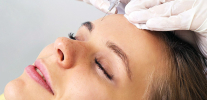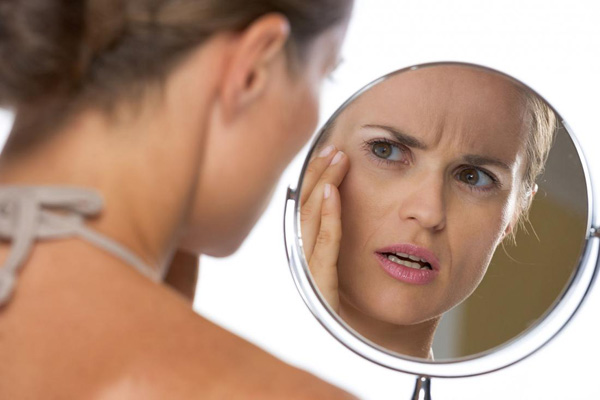
Reviews and frightening stories about the consequences of Botox injections on the face are the main reason for the fears of most patients before the botulinum treatment. It is enough for a person to hear once that after such injections, someone has a swollen face or an eyelid “dropped”, and he already declines to go to the clinic to remove wrinkles.
It must be admitted that the consequences of the administration of botulinum toxin preparations can indeed be very serious. Most often, they are cosmetic defects that are more noticeable than the wrinkles themselves, but generally do not affect the patient’s well-being. Less commonly, these or other disorders of the general condition of the body, which, although they do not last long, but leave an unpleasant impression.
However, in reality, cases of undesirable side effects from injections of Botox or its analogues are not so numerous, and in most of them such effects are either expressed so weakly that they are hardly noticeable, or pass very quickly.
For example, the photo below shows the redness and swelling of the face characteristic of botulinum therapy at the injection site:
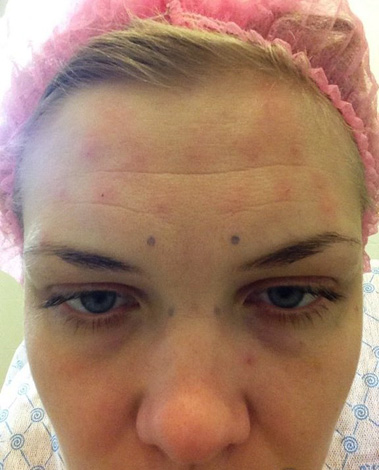
They usually disappear within 2-3 days after the procedure.
And this is how the superciliary roller looks, which can form after injections with a certain specificity of the anatomy of the face:

Such rollers are sometimes, on the contrary, desirable, and individual patients (usually men) even specially carry out the procedure, including for their education.
In addition, in many cases, the undesirable consequences of using Botox are associated with certain violations of its use both by the cosmetologist and by the patient. Nevertheless, a lot depends on compliance with the rules of rehabilitation.
And this means that to a large extent it is the patient’s behavior that affects whether unpleasant consequences will develop after Botox injections or not. Let's see what can happen after the procedure and what needs to be done to reduce the risk of such effects to a minimum.
What undesirable effects can sometimes develop after injections of botulinum toxin
All undesirable consequences after injections of botulinum toxin preparations can be divided into two groups: real and fictitious. The following paradox is interesting here: many patients are practically not afraid of the effects that can actually occur, but they are panicky afraid of those that are afraid of television programs, friends or manufacturers and sellers of other cosmetics, but which in reality either never developed after botulinum therapy, or whose connection with Botox injections is not confirmed.
Let's start with the real side effects. These include:
- Allergy is perhaps the most dangerous consequence. In the entire history of the use of botulinum toxin for cosmetic and medical purposes, more than 30 cases of death of patients from anaphylactic shock in response to the introduction of Botox or its analogues have been documented. At the same time, the frequency of allergic reactions during botulinum therapy is very low, so these procedures are considered almost safe. Usually, an allergy is expressed in a rash on the face or on the body, less often - the appearance of itching, rhinitis and conjunctivitis, which, however, pass quickly enough. Life-threatening conditions are extremely rare;

Rashes on the face after botulinum therapy are one of the side effects of the procedure.
- Ptosis is one of the most frequent and noticeable side effects. It consists in the omission of the upper eyelid with the impossibility of raising it by an arbitrary muscle contraction. Simply put, a person has one or both eyes slightly covered.Ptosis is not dangerous to health, but it is a cosmetic defect - if it is partial, the person looks tired and sleepy, if he is full, then the eye with a dropped eyelid does not see at all. Moreover, like some other consequences, ptosis is directly related to the effectiveness of botulinum toxin itself: the stronger the drug acts on the patient, the more likely this defect;
- Respiratory flu-like syndrome, manifested by typical symptoms of acute respiratory viral infections - mild fever, runny nose, cough and headache. With it, the temperature may rise slightly and pressure may increase. Passes without special treatment for 3-4 days;
- Edema at the injection site is a very frequent consequence, to one extent or another, manifested in almost half of patients. In some people, these edema is very noticeable and strongly affect the appearance, in others they are minimal and, if you don’t look at the face, then they are not at all noticeable;
- Bruises and hematomas - by their nature and frequency of occurrence, are very similar to edema, but differ in appearance from them;

Sometimes after injections of beauty, swelling and bruising remain at the injection site.
- Pain at the injection site, sometimes itching. It does not last long, up to 2 days, but may cause some inconvenience to the patient;
- Mimic defects, manifested due to impaired muscle activity and entailing changes in facial expression. Such defects include, for example, “Mephistopheles eyebrows”, strongly raised up and characteristic of a sardonic smile, “tragic face”, in which the corners of the lips go down, an expression of fatigue due to the ptosis described above. Sometimes these consequences develop simultaneously and reinforce each other;
- Violation of natural facial expressions when immobilized muscles are not involved in the expression of certain emotions. At the same time, the emotions themselves on the person’s face seem to be read, but it is also noticeable that the movements of the facial muscles are somewhat unnatural. An extreme case of this effect is the so-called “wax face effect”, or “mask effect”, in which most muscles do not participate in the expression of emotions and the person’s face becomes like the face of a celluloid doll. A well-known example of such a violation of facial expressions is the unsuccessful result of botulinum therapy with Nicole Kidman;
- The formation of the superciliary roller, developing due to the fact that when the forehead muscles are immobilized, the load on lifting the eyelids is borne by the muscles located on the eyebrows. Since they are in this case loaded more than before the procedure, they increase in size, as any other muscles grow with increasing physical activity. Eyebrows become more convex, can even hang over the eyes. As a result, the patient appears more coarse, masculine facial features and a heavy look, characteristic of the Scandinavian type. This effect can persist even longer than Botox itself;
- Asymmetry of the face is a consequence in which a particular effect appears only on one side of the face, as a result of which either a certain “skew” is constantly noticeable (for example, a constantly lowered corner of the lip or a raised eyebrow), or the asymmetry becomes visible when talking or expressing emotions ( one eyebrow does not rise, one cheek does not move);

An overdose of Botox is a common cause of facial asymmetry after botulinum therapy.
- Paralysis of the eye muscles and further inability to close the eye. If such a defect cannot be corrected, the eyes must be moistened artificially by instillation of special drops in it before Botox's action is completed;
- Diplopia caused by a malfunction of the circular muscle of the eye. It is manifested by double vision, in severe cases - a noticeable squint, but in general it develops very rarely;
- Inversion of the eyelid is an extremely unaesthetic defect in which the lower eyelid goes down, exposing the conjunctiva. It gives the impression of an inflamed eye and is very striking;
- Dysphagia, i.e. inability to take a sip. It develops relatively rarely, but causes serious inconvenience, up to the inability to take solid food;
- Increased salivation.
At the same time, it is interesting that the most often alleged consequence of botulinum therapy - the actual poisoning with botulinum toxin contained in Botox - never manifests itself at all. Toxin is contained in the drug in very small quantities and with percutaneous administration of the drug does not get into those muscles, the inactivation of which can be a health hazard.
How often do side effects develop?
In general, all confirmed complications after the administration of Botox rarely develop, and the procedure is considered quite safe.
So, the most common side effect - ptosis - develops in 15-20% of the number of procedures in which the drug is injected into the circular muscle of the eye. Given that this muscle breaks off no more often than in 10% of Botox cosmetic applications, the overall frequency of such a complication is no more than 2%.
Hematomas and edema do not develop more often than in 5% of cases, and the frequency of their appearance is inversely proportional to the skill of the doctor. The more professional botulinum therapy is carried out, the less often such consequences occur.
Typical mimic disorders - asymmetry, raising eyebrows and others - are even more associated with the professionalism of the doctor, since in the vast majority of cases they appear with errors during the preliminary examination of the patient's face. They can occur even with an ideally performed procedure, but the bulk of them in reality is precisely the result of a doctor’s mistakes.

Most often, side effects associated with facial expressions are a consequence of the doctor’s mistakes during the initial examination of the face.
Lacrimation, allergies, diplopia do not develop more often than in 1% of cases. The same consequences as dysphagia, eversion of the eyelid are generally considered extremely rare and appear in less than 0.1% of cases of the procedure.
In general, one should note the following dependence: the more dangerous the complication for the patient’s condition, the less often it develops. For example, consequences that have no effect on general well-being - facial expressions, partial ptosis, swelling at the injection site - are among the most common. But dysphagia, allergic reactions and eversion of the eyelid, on the contrary, are extremely rare.
Feedback
Here, this sad fate overtook me. I am sitting at home, waiting for the swelling to pass after Botox. The whole forehead is like one big bump, eyebrows hanging over the eyes, headache. And after all, nothing portended trouble! Stabbed for the third time, before that, put it every two years with the same doctor. I went to him, did everything according to the knurled pattern, set the same 18 units as usual. I did it in the morning, then I went to work, and already at work I noticed that my eyebrows began to protrude somehow. She left earlier, barely pulled a hat on her forehead, so he was swollen. At home she called a beautician, she said that everything will go away in 2-3 days, only you need to keep ice on your forehead. Hold, but to no avail. The next day, she barely opened her eyes. The first time, to be honest, it’s such a side effect that the eyebrows are already on the cheeks. Horror! And I don’t know how to remove it. The doctor says that it will pass by itself, you don’t need to worry, but it bothers me that this was not the case before, and the same doctor with the same remedy. Maybe she took Botox overdue? But this is a prestigious clinic in Moscow, they have branches in St. Petersburg, that is, they certainly will not be chemical. But she says that somehow it’s almost impossible to fix it intentionally. Or pass by itself, or so I will go. Now, now I’m afraid that it’s not going to pass, and I’ll go for a year like a drunkard with a swimming face.
Julia, from forum posts
Myths about the dangers of botulinum toxin
Separately, it is worth mentioning various far-fetched fears about the use of botulinum toxin, which arise either out of the blue, or as a result of a targeted campaign for Botox anti-advertising or botulinum therapy in general.
The most common of these myths is the suggestion that Botox can provoke oncology. There is no evidence for this: there are as many cancer patients among those who injected themselves with botulinum toxin preparations as among people who did not undergo botulinum therapy. But speculating on this idea is very easy: it is enough to make a statement and report that the connection between Botox injections and cancer is intentionally hushed up in order to enrich the manufacturers of the drug so that both corporations and clinics have to “wash off” this reputation and conduct explanatory conversations with patients.

Botulinum therapy does not cause cancer.
Another completely unfounded point of view is that injections of botulinum toxin affect the intellectual abilities of a person. Again, there is no evidence of this, nor has anyone tried to refute this myth. At a minimum, this is due to the fact that not a single person who understands the principle of Botox's action can even have thoughts about the effect of the drug on the brain. Those who do not understand the principle can come up with no less terrible things.
For example, in reviews and various discussions on forums, there are often reports that Botox reduces fertility and leads to infertility. Evidence is even provided in the form of statistics that more than 11% of patients who receive injections cannot have a child. True, the leaders of this opinion are not aware that approximately such a proportion of patients are elderly women who have already left childbearing age for completely natural reasons.
Sometimes they also talk about the long-term consequences of Botox, which occur 5-10 years after injections. Like, now you will not notice them, and later you will suffer. In reality, there is no evidence that the use of botulinum toxin can lead to any long-term consequences, especially to those that cannot be eliminated.
Finally, there is an opinion that Botox can cause aging and sagging skin. They theoretically substantiate this idea by the fact that when the muscles are immobilized, the skin tone decreases and the metabolism in it slows down, and this gradually leads to some degradation of it. Actual evidence is also provided: they say that in many patients, after regular injections, the skin will become loose and thinner. But, again, such assumptions should not be taken seriously: no one has ever proved that due to the lack of constant wrinkling, the skin loses its elasticity, and practice shows that since a significant part of users of botulinum therapy are people of age, there is nothing surprising in that that their skin is thinner and weaker than that of young ones. Simply put, it is not the skin that ages after Botox, but Botox is used in aging skin to compensate for the effects of its natural aging.

Another myth: supposedly the skin ages after botulinum therapy. On the contrary, Botox makes the skin more supple and supple.
Here, by the way, it is useful to note the imaginary effect of unjustified expectations from the use of Botox. For example, sometimes patients expect that injections of the drug will not only eliminate wrinkles, but will make the skin clean and supple. This is especially true for the neckline and “Nefertiti lifting” on the neck, when patients are confident that botulinum therapy will make the top of their breasts as smooth as in youth. And when they find that the skin has remained flabby, but just does not frown, they attribute this to the side effects of Botox. Like, the drug was introduced unsuccessfully and failed to get rid of cosmetic defects. Although, in fact, Botox is basically not able to affect the condition of the skin.
Separately, it is worth mentioning the "terrible" consequences of Botox, with which many women scare each other, but which in reality have nothing to do with Botox.
For example, such photos are often cited as a demonstration of the dangers of botulinum toxin therapy:
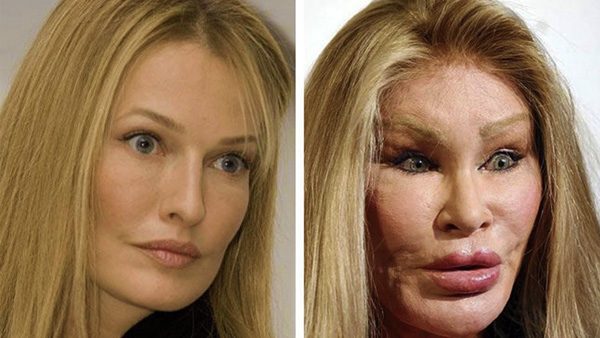
But in fact, none of the defects that we see in the “after” photograph is associated with botulinum toxin injections. There is an excess of gel fillers (possibly non-absorbable), which disfigured the woman’s face by unnaturally enlarging her lips, cheeks and eyebrows, and Botox is guilty only of Mephistopheles eyebrows, the effect of which is enhanced due to their large volume and the absence of natural wrinkles .
By the way, if you evaluate this photo, you can add that the image on the left shows that the woman has already injected Botox into the forehead, because her face clearly expresses an emotion of surprise, and she has no natural wrinkles. At the same time, it looks very good and fresh, namely excessive injections of fillers later completely ruined the woman's appearance.
When the patient is to blame for the consequences
Perhaps the main thing that needs to be understood by a person who is afraid of the serious consequences of botulinum therapy is that in many cases it is the patients' incorrect behavior and non-compliance with the instructions of a cosmetologist that cause side effects.
Every time you have to watch a story about the unfortunate victim of Botox on the Internet or on television, you need to remember that often the full picture is not revealed in such stories, and it is this victim who may herself be to blame for having received complications.
For example, a typical case is a violation of the rather stringent rules of rehabilitation after injections. So, according to the instructions, after Botox injections, it is forbidden to take alcohol during the day, lie for 3-4 hours, do not carry out other cosmetic procedures and go in for sports for 3 days - there are more than 15 such restrictions.
If, for the sake of interest, you see what patients write on the forums about combining alcohol and Botox, it turns out that many of them used this or that amount of alcohol, justifying it for many reasons - an important event, a significant date.

Immediately after the botulinum treatment procedure, alcohol consumption is strictly prohibited during the day.
And if a thousand of them had no consequences, and one of them Botox “spread” in the face, causing denervation of non-target muscles and the effect of a “mask”, then such a “victim” will be especially active in blaming the drug for severe side effects and precisely on everyone who is interested in the issue will pay special attention to her terrible story.
In other cases, patients can follow all the rules, but do not always tell the cosmetologist what he definitely needs to know for the most safe and effective procedure.
For example, a patient may be silent about taking certain medicines, that he was allergic to one drug (in the hope that the other would be harmless), about the presence of certain diseases. In this case, the person is afraid that the doctor will not agree to give him injections, knowing these nuances. And if for this reason complications develop, then he will most likely blame the doctor.
Finally, the most common cause of undesirable consequences, albeit not direct, is patients' attempts to save money and look for the cheapest services, the cheapest clinics, the cheapest doctors working with the cheapest drugs. Obviously, the cheapness in any case is due to something - either an uncertified (and, even worse, fake) drug, or the lack of professionalism of a doctor, or the poor reputation of the clinic. As a result, this pseudo-economy increases the risk of side effects.
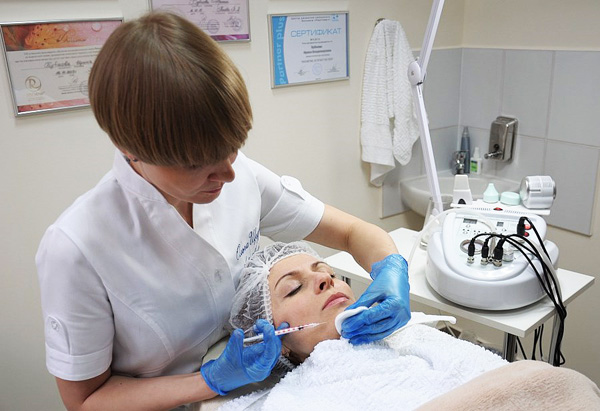
To avoid negative side effects, you need to choose a clinic and a cosmetologist with a good reputation.
On a note
It is important to understand that in many cases attempts to save on botulinum toxin most often result in even greater expenses associated with the need to correct the consequences, additional cosmetic and physiotherapeutic procedures, and even serious treatment, not to mention the aesthetic costs, which are difficult to express in monetary terms .
Side effects caused by doctor errors
On the other hand, unwanted side effects can occur (and in many cases manifest) through the fault of the doctor. The reasons for them in such cases are:
- Errors at the stage of face examination - studying the features of muscle anatomy and the formation of wrinkles in a particular patient. This stage is extremely important for understanding which muscle contraction causes the appearance of certain wrinkles, as well as for preventing undesirable consequences. Many novice cosmetologists do not do this and prefer to work "point by point", that is, they inject in certain places according to the strict scheme prescribed in textbooks and instructions. Since such schemes are universal, they do not take into account the specific structural features of the face of a patient. As a result, with such work the slightest individual features of the anatomy of the facial muscles can cause unforeseen consequences;
- Errors or intentional violations of the instructions for restoring the drug. Being diluted in incorrect dosages, it can give unpredictable effects;
- Inaccuracies in the selection of the amount of funds for injection at a particular point or region. Excessive amounts can cause almost any of the undesirable effects, and insufficient dosages will lead to the fact that the effect will not appear at all, or will be incomplete;
- Incomplete questioning of the patient before the procedure or the absence of such a questioning at all. Often this happens if the doctor is in a hurry to carry out the procedure as quickly as possible in order to “skip” the maximum number of patients in a day and earn more. This is another reason not to chase cheapness - it is better to pay a little more to a specialist who will perform work strictly according to the schedule in full;
- The use of counterfeit, the effect of which on the body can differ significantly from the action of the original Botox. Moreover, sometimes the doctors in the clinics do not even know that they are using fakes - they use the funds that the clinic buys, and the clinic’s management is already carrying out certain frauds.
In general, complications caused by doctor’s errors in most cases occur more often and have more negative consequences than those provoked by the patient’s direct actions. Nevertheless, part of the responsibility for the doctor’s mistakes lies with the patient himself. Still, it is he who selects the clinic and decides to go to the cosmetologist for treatments, the treatment of which can end with undesirable effects.
Factors that are difficult to consider in advance
Situations also happen when there is no guilt of either the doctor or the patient in the side effects that have arisen.
So, very specific features of the location of the muscles are sometimes impossible to diagnose at the stage of examination of the patient's face. They are detected only when the introduction of Botox at a specific point does not give the result that the doctor was counting on. This is the most obvious example, but it is the least common in practice.
More often the patient develops unpredictable reactions to the drug itself. This can be either the excessive effect of the drug with excessive effects (“wax face”, “evil expression”), or the insufficient effect of the drug or its complete absence.
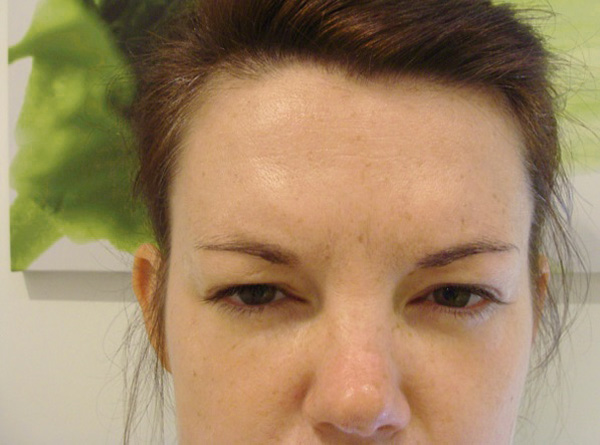
With the excessive action of botulinum toxin, the patient's face may look gloomy.
On a note
According to statistics, 5% of people are generally insensitive to botulinum toxin. They have neither Botox injections nor injections of any other drugs of this substance will provide a cosmetic effect. In some people, such insensitivity is due to immune reasons - they could ever get botulism and their body has developed immunity to botulinum toxin. In others, this numbness is associated with genetic causes and is congenital.
An individual reaction to the drug may also be an allergy. In some cases, the doctor can predict it, based on the study of the anamnesis, but more often Botox's intolerance can be detected only by injecting and receiving an appropriate complication.
Fake Botox and possible complications after its injection
Really dangerous can be injections of Botox fakes and other drugs. Moreover, the consequences of their use are completely unpredictable, because you can never be sure that in reality it is in a bottle with the drug. Judging by the reviews of cosmetologists, among the counterfeit drugs they came across, everything came from pure distilled water to poorly purified botulinum toxin from clostridial proteins.

This may look like bottles of fake and original Botox.
Of course, the danger of using such funds is unpredictable in any case. When they are introduced under the skin, various effects may appear: long-term edema, severe pain and itching at the injection site, rejection of the drug with inflammation and formation of bumps, severe allergies, scarring of tissues.
In fact, it is quite possible to spoil the appearance of such means instead of improving it. In some cases, surgical intervention is required to eliminate the negative consequences of administering fake drugs.
The main problem associated with such counterfeiting is the inability to avoid it with guarantee. In some clinics, fakes were found that outwardly did not differ from the original drug and even had holographic protective stickers, but the composition of which did not match the one declared for Botox. In these cases, even conscientious doctors working in the clinic can be completely sure that they inject the real drug.
On a note
But the fear of expired Botox is not justified. Studies have shown that when stored for longer than the recommended shelf life, its properties do not change, and even if a drug with an expired shelf life is used, its effect will be similar to “fresh”. Nevertheless, one should not avoid expired funds, but a clinic that allows itself to be used in violation of the rules for its use.
What can be done if the unwanted effects still appear?
Almost all the undesirable consequences of botulinum toxin therapy should be corrected or treated only in conjunction with a doctor, or at least by agreement with him over the phone. The only exceptions are the normal transient effects for the procedure: respiratory syndrome, tingling at injection sites, minor local edema or hematomas. All of them pass within a few days and usually do not require the use of special medicines. The doctor warns the patient in advance about the possibility of their occurrence after the procedure. And only if they persist for 4-5 days after the injection and even more so, you need to call the beautician and discuss with him the beginning of a possible treatment.

If after a week the side effects from exposure to botulinum toxin still persist, you must inform your cosmetologist.
Separate defects due to excessive action of the drug may be quite simple in correction.For example, raising eyebrows, partial ptosis, drooping of the corners of the lips, asymmetry of facial features after the procedure are sometimes corrected by the botulinum toxin injected into those muscles, the reduction of which leads to such consequences.
True, these consequences can not always be quickly adjusted. In some cases, to eliminate them, it is necessary to conduct a course of physiotherapeutic procedures, and sometimes you just need to wait until the defects disappear on their own. Often this requires 2-3 months of waiting.
Finally, some side effects can last as long as the effects of Botox itself. This refers to the consequences that have arisen due to the action of the drug on non-target muscles, including the effect of a “dull” or “wax” face, some consequences such as raising eyebrows or ptosis. They disappear when the main action of the drug is completed and wrinkles reappear.
On a note
It is almost impossible to remove Botox from the body after an unsuccessful procedure. There are anti-botulinum serums, injections of which somewhat weaken the manifestations of the action of the substance, but you should not count on the complete elimination of the Botox effect when using them. In addition, such serums are medicines, and doctors will not prick them in the absence of signs of botulism in the patient and the threat to his life.
Allergy, as the most specific and most dangerous side effect, requires the adoption of measures adequate to the strength of its manifestation:
- If it is limited to only a mild local rash, then it is enough to simply wait it out;
- If the rash spreads to the entire body, itching appears, then it is necessary to coordinate with the doctor the administration of antihistamines;
- With the development of Quincke's edema, and even more so with anaphylactic shock, emergency hospitalization is required, since death can occur within literally several minutes.

Quincke's edema is one of the most dangerous side effects after "beauty injections", requiring immediate hospitalization.
On a note
Most cosmetologists require that after the botulinum treatment procedure, the patient be in the office for half an hour and the doctor can monitor his condition. This will guarantee that with the rapid development of anaphylaxis, the specialist will have time to administer adrenaline or another potent drug to the person, stopping the allergic reaction.
If side effects occur, it is useful to consult not only the doctor who performed the procedure, but also another specialist. If the cause of the consequences is the mistakes of the cosmetologist, then it is reasonable to eliminate these defects under the guidance of another doctor.
Ways to Avoid Unpleasant Situations
There are several rules, the observance of which allows to minimize the risk of undesirable consequences of botulinum therapy:
- For services, you should contact a cosmetologist, in patients whose number of side effects is minimal. Checking this information is usually difficult, therefore it is useful to go to a specialist whose services were used by friends;
- No need to chase the savings of 1-2 thousand rubles. Usually, this saving is due to all the undesirable consequences. Doctors working at average market prices, for the most part, carry out the safest procedures;
- It is necessary to strictly observe all the instructions for rehabilitation after botulinum therapy. Even if some of them seem too strict and redundant, it is better to follow them than to fall into a scanty percentage of those for whom violations of a rule led to side effects.
It is also extremely important to listen to all the advice of a cosmetologist. Cases when, based on experience and knowledge, the doctor does not recommend the patient to undergo the procedure because of the high risk of side effects.In such cases, it is obvious that it is better to preserve wrinkles or smooth them out a little by other methods than to try to remove them and get severe complications. Stubborn patients, in fear of signs of old age, are ready to take the risk, take it, get side effects and then blame the drug, the doctor and the clinic for them.
In fact, if you approach the issue of wrinkle removal deliberately, actively communicate with the doctor and follow his instructions, truly serious consequences can almost always be avoided.
Negative consequences after the botulinum treatment procedure - the result of mistakes by unskilled cosmetologists
Useful video about when you can not do “beauty injections”



